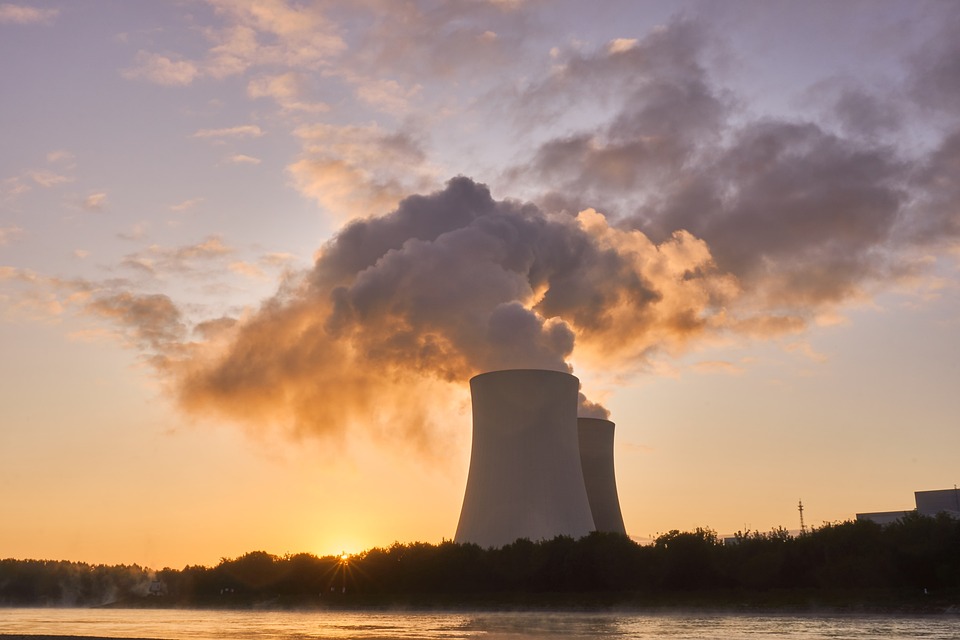The Current State of Nuclear Energy
Nuclear energy has long been a controversial topic, with proponents praising it for its carbon-free power generation and opponents criticizing it for perceived safety risks and concerns over radioactive waste disposal. Despite these debates, nuclear energy currently provides about 10% of the world’s electricity, making it a significant source of power globally.
Advantages of Nuclear Energy
One of the main advantages of nuclear energy is its low carbon footprint. Unlike fossil fuels such as coal and natural gas, nuclear power plants do not emit greenhouse gases that contribute to climate change. This makes nuclear energy an attractive option for countries looking to reduce their reliance on carbon-heavy energy sources.
Nuclear power plants are also highly reliable and have a high capacity factor, meaning they can operate at full capacity for extended periods of time. This makes them a stable source of energy that can help meet demand during peak hours or when renewable sources such as solar or wind are not producing enough power.
Challenges Facing Nuclear Energy
Despite its advantages, nuclear energy faces several challenges that have hindered its growth and adoption. One of the main concerns is safety, particularly in the wake of high-profile accidents such as the Chernobyl disaster in 1986 and the Fukushima Daiichi disaster in 2011. These incidents have raised doubts about the safety of nuclear power plants and have led to increased scrutiny and regulation.
Another challenge facing nuclear energy is the issue of radioactive waste disposal. Nuclear power plants produce spent fuel rods that remain radioactive for thousands of years, posing a risk to human health and the environment. Finding safe and effective ways to dispose of this waste has been a major hurdle for the industry.
The Future of Nuclear Energy
Despite these challenges, nuclear energy has the potential to play a significant role in solving the world’s energy crisis. As countries around the world look to reduce their carbon emissions and transition to more sustainable energy sources, nuclear power could provide a reliable and low-carbon alternative to fossil fuels.
Advanced Reactor Technologies
One of the most promising developments in nuclear energy is the advancement of new reactor technologies that aim to address some of the industry’s key challenges. For example, small modular reactors (SMRs) are smaller, more flexible reactors that can be built in factories and transported to the site, reducing construction costs and lead times.
Molten salt reactors and pebble bed reactors are other examples of advanced reactor designs that offer improved safety features and more efficient energy production. These technologies have the potential to revolutionize the nuclear energy industry and make it more competitive with other forms of energy generation.
Nuclear Energy and Renewable Sources
Another key factor in the future of nuclear energy is its potential role in complementing renewable energy sources such as solar and wind. While renewable energy has made significant progress in recent years, it still faces challenges such as intermittency and storage. Nuclear power could provide a stable and reliable source of energy that can fill in the gaps when renewable sources are not producing at full capacity.
By combining nuclear energy with renewables in a diversified energy mix, countries can reduce their reliance on fossil fuels and move towards a more sustainable and resilient energy system. This approach, known as a “nuclear-renewables hybrid system,” has the potential to help countries meet their climate goals while ensuring a stable and secure energy supply.
Public Perception and Policy Support
One of the biggest obstacles facing the future of nuclear energy is public perception. Despite its advantages, nuclear power remains a divisive issue, with concerns over safety, waste disposal, and the potential for accidents. Building public trust and support for nuclear energy will be crucial in ensuring its continued growth and adoption.
Policy support will also play a key role in shaping the future of nuclear energy. Governments around the world will need to implement supportive policies and regulations that encourage investment in nuclear power and incentivize the development of new technologies. By creating a supportive environment for nuclear energy, policymakers can help ensure that it plays a vital role in addressing the world’s energy needs.
Conclusion
While nuclear energy faces challenges and obstacles, it has the potential to play a significant role in solving the world’s energy crisis. With advancements in advanced reactor technologies, the potential for nuclear-renewables hybrid systems, and supportive policies and regulations, nuclear power could be a key component of a sustainable and low-carbon energy future.
By addressing safety concerns, improving waste management practices, and building public trust, the nuclear energy industry can overcome its challenges and emerge as a crucial player in the transition to a more sustainable energy system. With the right investments and support, nuclear energy could be a vital part of the solution to the world’s energy crisis.
